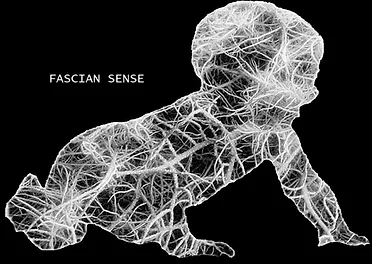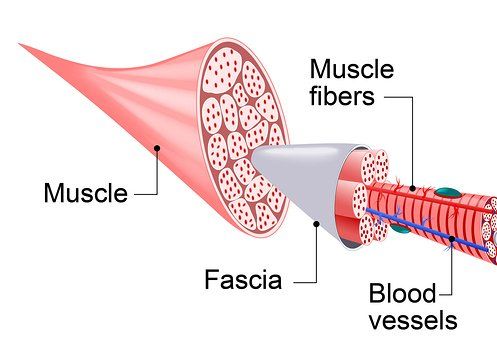Myofascial Release
Fascia is very densely woven, covering and interpenetrating every muscle, bone, nerve, artery and vein as well as all of our internal organs including the heart, lungs, brain and spinal cord. The most interesting aspect of the fascial system is that it is not just a system of separate coverings. It is actually one structure that exists from head to foot without interruption. In this way you can begin to see that each part of the entire body is connected to every other part by the fascia, like the yarn in a sweater.
Fascia also plays an important role in the support of our bodies, since it surrounds and attaches to all structures. These structures would not be able to provide the stability without the constant pull of the fascial system. In fact, our bones can be thought of as tent poles, which cannot support the structure without the constant support of the guide wires (or fascia) to keep an adequate amount of tension to allow the tent (or body) to remain upright with proper equilibrium.
In the normal healthy state, the fascia is relaxed and wavy in configuration. It has the ability to stretch and move without restriction. When we experience physical trauma, scarring, or inflammation, however, the fascia loses its pliability. It becomes tight, restricted and a source of tension to the rest of the body. Trauma, such as a fall, whiplash, surgery or just habitual poor posture over time and repetitive stress injuries has a cumulative effects. The changes they cause in the fascial system influence comfort and the functioning of our body. The fascia can exert excessive pressure producing pain or restriction of motion. They affect our flexibility and stability, and are a determining factor in our ability to withstand stress and strain.
The use of Myofascial Release allows us to look at each patient as a unique individual. Our one-on-one therapy sessions are hands-on treatments during which our therapists use a multitude of Myofascial Release techniques and movement therapy. We promote independence through education in proper body mechanics and movement, through the enhancement of strength, flexibility, and postural and movement awareness.
Benefits of Myofascial Release
Myofascial release offers so many benefits to everyone, not just athletes. It is a safe and very effective hands-on technique that involves applying gentle sustained pressure into the Myofascial connective tissue restrictions to eliminate pain and tension and restore motion in the body. By manipulating the myofascia, physical and energetic constrictions are released, opening areas that may feel stuck or resistant to change. Some main benefits of applying these techniques:
Increases blood flow
Research has shown that self-myofascial release can increase vascular function. By getting rid of knots and tension in the fascia that may be restricting fluid flow in the area, these techniques help to keep your muscles and connective tissue well hydrated. That means that you’ll recover and heal faster.


Reduce muscle soreness
With better circulation to your muscles and connective tissues, you’ll experience less muscle soreness. This is particularly helpful if you are involved in any physical activity.
Maintains normal functional muscular length
Myofascial release relieves tension in the myofascia network and helps your muscles return to their normal length, improving muscle function.
Encourages movement of your lymph
A major component of your immune system that helps to fight infection int he body. However, the lymph system relies on movement pressure to move the fluid. Myofascial release can encourage the flow of lymph back to the heart.
Ultimately, this means that you’ll move better, recover faster, perform better and have less pain so that you can continue to be active and do what you love to do.
John Barnes - Speaks On Myofascial Release MFR



